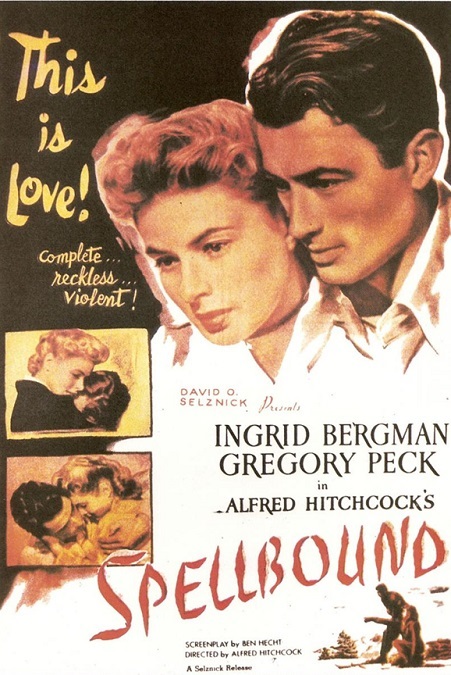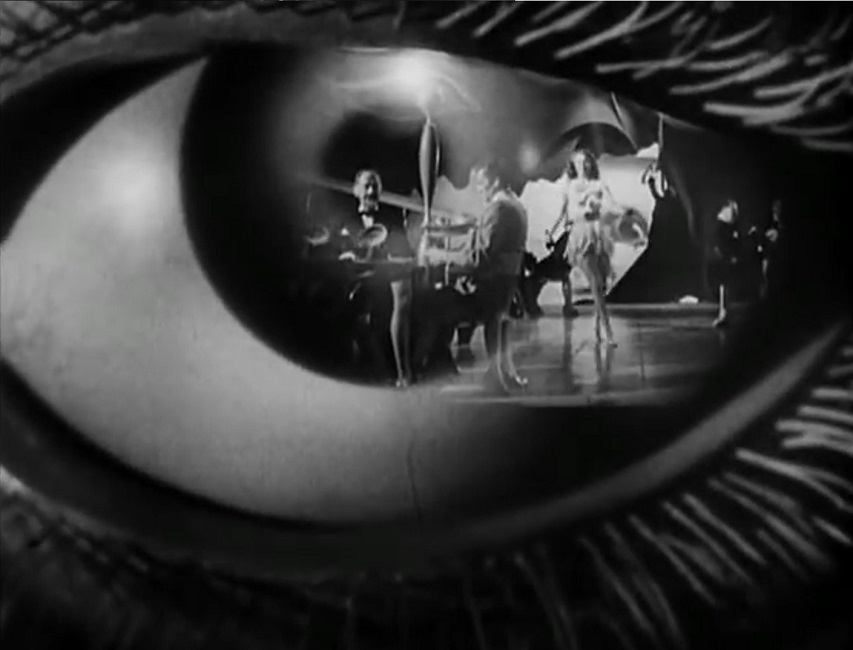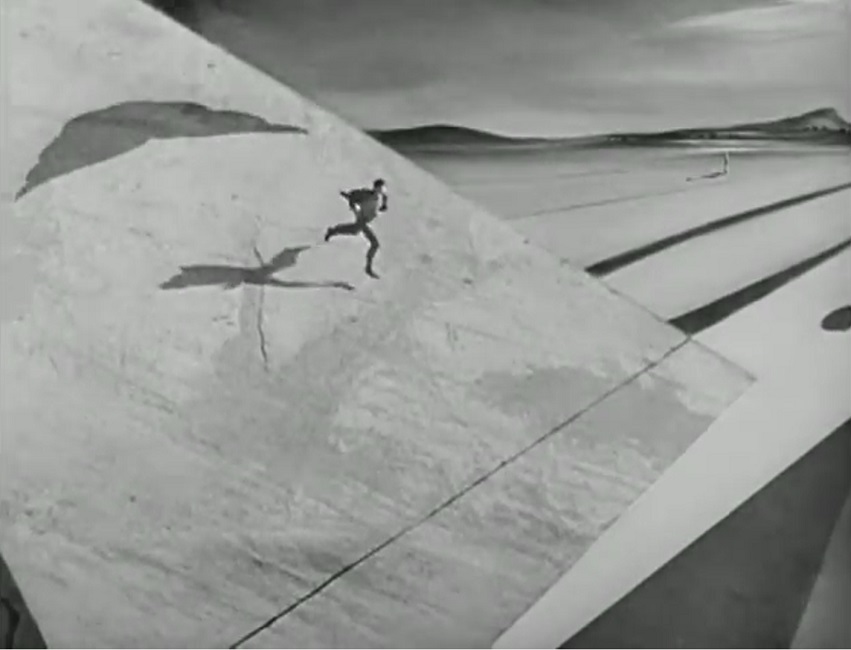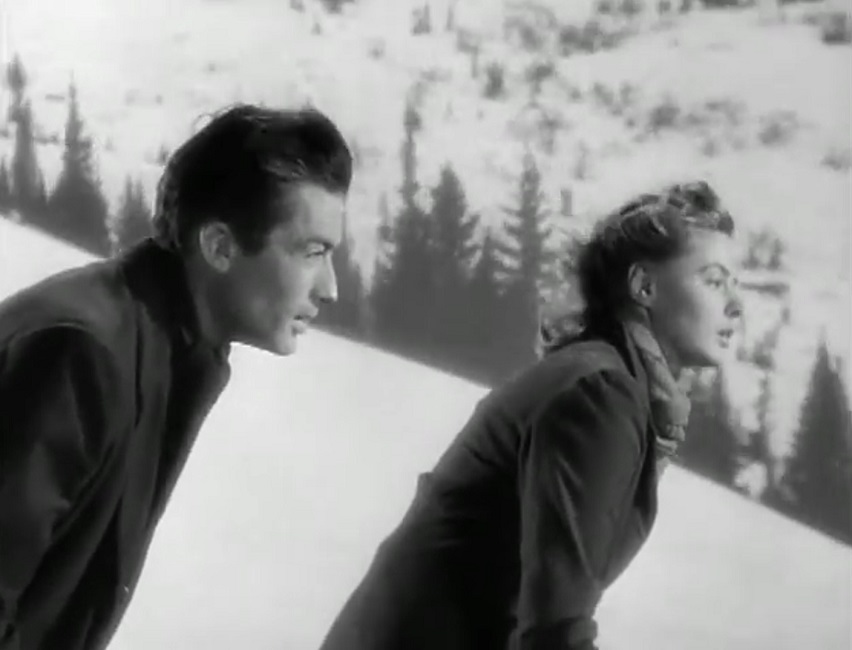



Spellbound – 1945

The special effects for this Hitchcock movie were made fascinating by the fact that they were created in conjunction with the world famous artist Salvador Dali. His imagery is fanciful and beautiful, but it also has a definite element of darkness to it. The effects in the film were mostly centered around a dream sequence that blended live action, animation, paintings, and strange random floating shapes. It was beautifully done, but the entire scene only lasted about two minutes.
I learned from reading the movie’s trivia page on IMDB that Hitchcock and Dali originally wanted to film a dream sequence that lasted a full twenty minutes. “It included a scene in a ballroom with hanging pianos and still figures pretending to dance, followed by John Ballantyne dancing with Dr. Peterson, who then turns into a statue.” Some of Hitchcock’s original concept was actually filmed, but he and the artist were unsatisfied with the results.
Also, per IMDB, “According to Alfred Hitchcock’s biographer Donald Spoto, William Cameron Menzies was disappointed at what he considered unappealing dream sequences, and asked to remain uncredited for them. When the sequence received critical and audience acclaim, Hitchcock was happy to take the credit for himself.” Did it matter that Hitchcock didn’t have anything to do with directing that scene?
That’s not to say there weren’t any other special effects in the film. There were plenty. There was the usual barrage of rear-projection and matte-painting shots. Unfortunately, while those things were so commonplace they should have been simple to accomplish, those of the former appeared poorly executed, especially when set next to those of the latter, which were absolutely stunning.
There was one scene in particular that comes to mind, in which both of these kinds of effects were used. As Gregory Peck and Ingrid Bergman are skiing down a mountain, the actors look completely separate from their background. The projection was painfully obvious. But then the camera pulls way back to show us the entire mountain slope on which they are skiing, and it was beautiful, showing us how they are speeding toward the edge of a sheer cliff. It was a gorgeous shot!
The movie’s climax also caught my attention. As the real villain is revealed, we see things from the killer’s perspective, looking down the barrel of his gun as it follows Bergman to a door. When she is gone, the gun turns toward the viewer and fires, indicating that the killer is committing suicide. The gun and the hand were both oversized and fake, but it was a really cool effect, allowing the weapon to be turned in the right direction easily. And as the weapon goes off, there are two frames of color, showing a quick flash of bright red in the otherwise black and white movie. Pretty clever, Mr. Hitchcock.